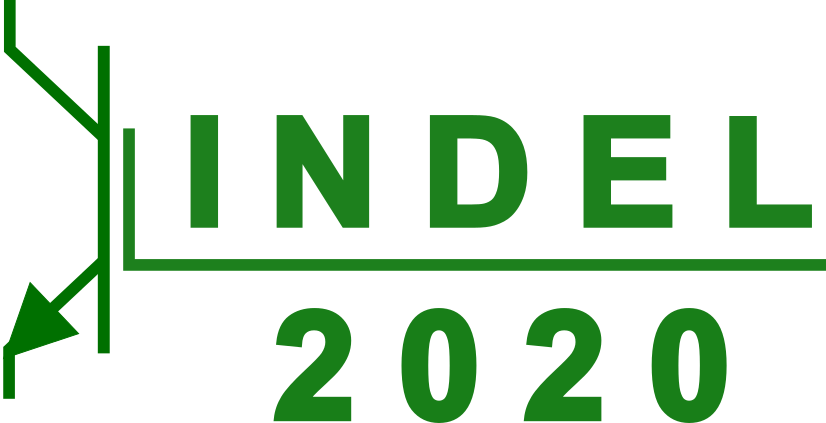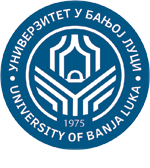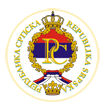2020 International Symposium on Industrial Electronics and Applications - INDEL 2020
4-6 November 2020, Banja Luka, Bosnia and Herzegovina
The Symposium is sponsored by IEEE Industry Applications Society, IEEE Power Electronics Society and IEEE Industrial Electronics Society.
Keynote Speakers
Overview and Challenges of Software Architecture for Autonomous Driving

Dr. Stefan Poledna is a member of the executive board and co-founder TTTech Computertechnik AG, and CTO at TTTech Auto. He is responsible for the technology roadmap, all scientific topics and quality management in both companies.
Dr. Stefan Poledna has over 30 years of international industry experience in innovative embedded systems development and has authored and co-authored several patents with a focus on safety, communication and automated driving. He received his M.Sc. and Ph.D. degree in computer science with distinction from Vienna University of Technology, where he also lectures on Dependable Computer Systems.
The traditional design and development processes for software in automotive systems are reaching their limits. This is especially true for complex problems like autonomous driving and advanced driver assistance systems. Because of the current shortcomings we observe unacceptable durations in the development and update of automotive software.
In this keynote I will discuss a more modern design approach to automotive software development. This new approach borrows from state-of-the-art IT software development paradigms and centers around a safe software execution environment that operates embedded in electronic control units inside the car. We call this safe software execution environment “MotionWise” which is already deployed in over a million cars on the streets today.
Collaborative Robotics Is Coming

Academician Prof. Dr. Dejan B. Popović
University of Belgrade,
Faculty of Electrical Engineering, Belgrade, Serbia
Serbian Academy of Sciences and Arts,
Belgrade, Serbia
Dejan B. Popović was born in 1950 in Belgrade, Yugoslavia (now Serbia).
He is the member of the Serbian Academy of Sciences and Arts (SASA), Belgrade, Serbia since 2015 (associate member from 2009 to 2015).
He is the Corresponding (foreign) member of the Slovenian Academy of Sciences and Arts, Ljubljana, Slovenia since 2019.
He is the member of the Academy of Engineering Sciences (AINS), Belgrade, Serbia since 2004.
He is Professor Emeritus at Aalborg University, Aalborg, Denmark.
Education:
He earned Dipl. Eng. (five-year program) in Electrical Engineering in 1974, Ms.Sci. in Solid State Physics in 1977, and Ph.D. in Technical Sciences Engineering in 1981 (all from the Faculty of Electrical Engineering, University of Belgrade, Serbia). He received a distinguished Dr. Tec. degree from the Aalborg University, Aalborg, Denmark in 2003.
Work experience1:
Professor Academician, Faculty of Electrical Engineering, University of Belgrade
1974 -
Emeritus Professor, Aalborg University, Denmark
2016 –
Prof. Rehabilitation Engineering, Center for SMI, Aalborg University, Denmark
1999 – 2014
Prof. Neurological Surgery, University of Miami School of Medicine, Florida
1991 – 1996
Prof. Biomedical Engineering, University of Miami College of Engineering, Florida
1991 – 1996
Prof. Physiology, Dept. of Physiology, University of Alberta, Edmonton, Canada
1987 – 1991
Prof. Institute of Technical Sciences, SASA, Belgrade
2015 – 2017
1He was teaching many courses at BS, Ms.Sci. and Ph.D. level in Belgrade and abroad. He developed curricula for several courses in the domain of biomedical engineering and the Laboratory for Biomedical engineering and technologies (http://bmit.etf.rs) as well as the Laboratory for Rehabilitation engineering at Aalborg University (SMI). He authored 11 textbooks. He supervised and supervises in total 28 Ph.D. students, more than 50 Ms.Sci. students and more than 150 BS and MS students.
Research and development results:
He published about 500 papers (3 books, 130 journal publications (> 90 in journals on the WoS), 34 book chapters, 9 textbooks, and many conference papers). He submitted eight patent applications. The Google Scholar database shows 7700 citations, and h=48. The SCOPUS database shows about 3100 citations and the Hirsh factor h=35 based on 182 references.
His research led to 8 patent applications and the innovations were translated to clinical research or daily use (Self-Fitting Modular Orthosis, 1978; Powered transfemoral prosthesis, 1980; Hybrid-System for Assisting Locomotion in Paraplegic Patients, 1984; Automatic Control of Walking, 1999; Belgrade Grasping System for tetraplegic patients, 1998; Functional Electrical Therapy for hemiplegic patients, 2001; Walkaround - device for postural assistance, 2008; Multichannel electrical stimulation system, 2011; Array electrodes, 2012; System for assessing grasping force, 2015). The aim of the scientific work was to develop instruments and methods to the technological readiness level which can be translated to the industry.
He was project leader or participant on several NIH, NSF, NIDRR, NSERC projects. He was the project leader r participant in several FP6, FP7 EU projects. He was leading several TEMPUS projects related to the development of new curricula for mater students. He led several government funded project in Denmark and Serbia. He participated in the development of several startups in Denmark and Serbia. The overall funding that hi received is over 16 million USD.
The main results of the research are instruments and assistive devices that are used for the rehabilitation of persons with motor disability, but also for electrophysiological measurements and instruments for nuclear medicine. The main outcome of the rich and dedicated educational and research activities are more than 50 excellent researchers working in the field of biomedical engineering in Serbia and abroad.
He is the Associate editor of IEEE Trans on Neural Systems and Rehabilitation Engineering; Medical & Biological Engineering & Computing and member of the review boards of Medical Engineering and Physics and J Neuromodulation. He is the Editor of Journal of Automatic Control, University of Belgrade, since 1989. He is the reviewer of many journals (IEEE Trans on Biomed Eng, IEEE Trans on Rob and Autom, IEEE Trans on Rehabil Eng, Ann of Biomed Eng, Intern. J of Robotics, Intern J Kinesiology and Electromyog, IEEE Spectrum, Spinal Cord, etc.).
He was the Chair or member of the scientific committees at more than 80 international and national meetings.
Memberships: Founding member of the International Functional Electrical Stimulation Society (IFESS); Fellow and Founding member of the European Alliance for Medical and Biological Engineering (EAMBES), President of the Serbian Society for Electronics, Telecommunications, Computing, Automatics and Nuclear Engineering (ETRAN), IEEE - Institute for Electronic and Electric Engineers; EMBS - Biomedical Engineering Society.
Robotics is one of the elemental stones for Industry 4.0. The term robotics considers two types of robots for the industry: industrial robots and collaborative robots. An industrial robot is a self-operating machine replacing a worker, while the collaborative robot (Cobot) works alongside humans rather than replacing them. Cobots need to facilitate the physically tricky part of activities; hence, a worker can bring in creativity, reasoning, and critical thinking. Cobots are much less present in the industry (≈3%) compared to robots (≈97%). The projected increase to over 30% is in the mind of robotics society. The envisioned expansion is foreseen among small and medium-sized manufacturers who most likely will operate in the automation-challenged low-volume space and need cobots' flexibility. Cobots work at lower speeds and payloads than industrial robots; yet, it can augment human abilities. Cobots are much less expensive and can be easily integrated into the workplace. Cobot deployment can be fast and straightforward. The biggest problem in expanding the use of cobots is the man-machine interface and the control design that combines natural (biological) control of the worker and the external control driving the parallel skeletal system. Whereas traditional industrial robots require advanced programming skills, cobots can be given work instructions without coding, making deployment and re-deployment easy. Some of the cobot developers would like to re-term the programming with the training and re-training of a cobot. Cobots must meet the standards (e.g., ANSI/RIA R15.06-2012 and ISO 10218-1,2:2011). The standards ensure that the robots are collaborative, but they do not cover the applications. The lecture will have illustrations from the domain of cobots used to assist people with compromised movements.
Industrial Electronics 4.0: Is It Going to Be Free and Open?

Prof. Dr. Predrag Pejović
University of Belgrade
Faculty of Electrical Engineering,
Belgrade,
Serbia
Predrag Pejović was born in Belgrade, Serbia, in 1966. He received the B.S. and M.S. degrees in Electrical Engineering from the University of Belgrade, in 1990 and 1992, respectively, and the Ph.D. degree from the University of Colorado, Boulder, in 1995. In 1995, he rejoined the University of Belgrade, where he is presently Professor in charge of teaching undergraduate courses Electrical Measurements, Software Tools in Electronics, Analog Electronics, Power Electronics, M.S. level course Power Electronics 2, and Ph.D. level courses Selected Topics in Power Electronics and Control of Power Converters. His research interests are in circuit design, power converters, three-phase high power factor rectifiers, dynamics of nonlinear systems, electronic measurements, automated measurement systems, wireless positioning, and techniques for computer-aided analysis, design, and optimization of power electronic systems.
The paper addresses phenomena of free software and open hardware and it is based on twelve years of the author's experience in using free software, ten years of teaching a course that covers free software tools used in electrical engineering, about five years of experience with open hardware, and four years of teaching a reformed course in electrical measurements, which involves extensive use of free software. Teaching experiences are presented in the paper, plans for further improvements in existing courses, as well as some ideas about new courses that would cover free software and open hardware topics not covered already. Actual software tools are discussed. Also, the use of free software, open hardware, open data, and open culture in general, in research practice is presented, where open access articles and open public repositories are new means for disseminating scientific information supporting reproducibility and verifiability of the results, extending the information exchange beyond the paper form. In embedded systems, the method of building upon finds free software a useful tool, besides security and privacy advantages. Promising ongoing projects, like open instruction set architectures, are also discussed. In the time when Industry 4.0 and the fourth industrial revolution are discussed, it seems that open models of software, scientific, and intellectual production are unexpected winners, regardless indirect supporting business models. According to author's experience, free software is mature enough and offers numerous advantages to be a basic tool in education, and open culture practices require modification of curricula to address the situation already present.















